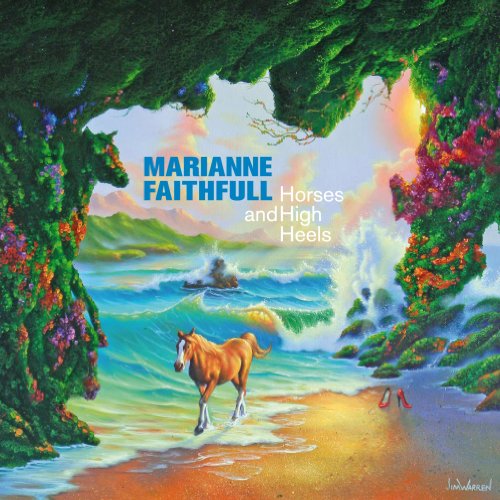
Marianne Faithfull
Horses and High Heels
Release Date: Jun 28, 2011
Genre(s): Pop/Rock, Adult Alternative Pop/Rock, Alternative/Indie Rock, Pop Idol, Contemporary Pop/Rock
Record label: Ais
Music Critic Score
How the Music Critic Score works
Album Review: Horses and High Heels by Marianne Faithfull
Very Good, Based on 7 Critics
Based on rating 5/5
By the time the Sixties were over, Marianne Faithfull had been run ragged as the glamorous muse of the Rolling Stones. For Horses and High Heels, she traveled to New Orleans, looking back on the past with fondness, to record what she called her "happy" album. Instead, we get 13 songs (including Dusty Springfield and Elton John covers) heavy with lost love and Faithfull's honey-over-gravel voice.
Based on rating 8/10
Marianne Faithfull’s last record,Easy Come, Easy Go (2008), was an ambitious double album of covers that featured an extraordinary roll call of guest artists and ranged widely through musical genres, finding space for songs by Dolly Parton, Black Rebel Motorcycle Club, Judee Sill, Duke Ellington, Morrissey, Espers, Merle Haggard and many more. In terms of quality control, Easy Come, Easy Go was, like much of Faithfull’s recorded output, an erratic release, one that lurched wildly from the sublime (Faithfull and Nick Cave tackling The Decemberists’ “The Crane Wife”) to the ridiculous (a truly bizarre cover of Bernstein/Sondheim’s “Somewhere (A Place For Us)” with Jarvis Cocker). But the album nonetheless generated a cumulative excitement as Faithfull and her collaborators somehow turned the record’s melange of folk, blues, jazz, country and contemporary rock songs into something resembling a cohesive statement.
Based on rating 7.8/10
Marianne Faithfull’s new album begins with a particularly well-chosen cover. She kicks off Horses and High Heels with the ominous chords and spiritual misgivings of “The Stations,” by The Gutter Twins (better known as Greg Dulli and Mark Lanegan). With its ominous pace and prickly guitars, it’s a perfect showcase for Faithfull’s distinctive voice, a gravelly instrument that locates new trials and transgressions in these lyrics.
Based on rating 3.0/5
Marianne Faithfull has had a long career as an actress and singer, and it’s often been difficult to separate the two, with her musical output functioning as an extension of her theatrical side, another opportunity for inhabiting characters and roles. From the innocent pastoral folk of her mid-‘60s albums through her grittier, more sexually tinged material of the ‘70s, her abilities and tastes have changed, but the consistent feeling of a shifting, transparent voice has remained. It’s a characteristic perpetuated by her penchant for covers, which in most cases take up a good portion of her albums.
Based on rating 2/5
Marianne Faithfull albums live or die by the success of her collaborations and producers. Her records have been inconsistent over the decades, except for the sing-speak-croak style she's employed since her late 70s re-emergence. Recently, she's worked with a lot of next-generation names, yet Horses And High Heels is a less contemporary album, calling on old friends Lou Reed and Dr.
Opinion: Very Good
A stellar cast aids Faithfull through a set of striking originals and strong covers. John Doran 2011 Many so-called UK blues or folk singers would die for the authentic, lived-in singing voice of Marianne Faithfull. Or, to put it more succinctly, many so-called UK blues or folk singers would literally die if they tried to follow in the footsteps of this iconic survivor.
Opinion: Average
Age before beauty. Marianne Faithfull has both, but only at 64 does she get to flaunt it so nonchalantly, a diva grandmother dressed in furs and diamonds sharing her memory book with, say, a 19-year-old local songwriter named Ariel Abshire. There's sweet regret but no apology in Horses and High Heels, and though the lyrics of Faithfull's title track tell a different tale, the image is universally and resolutely one of female youth.

